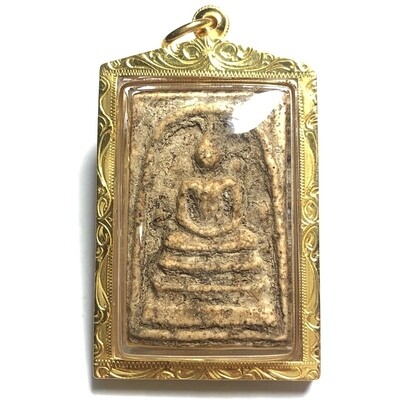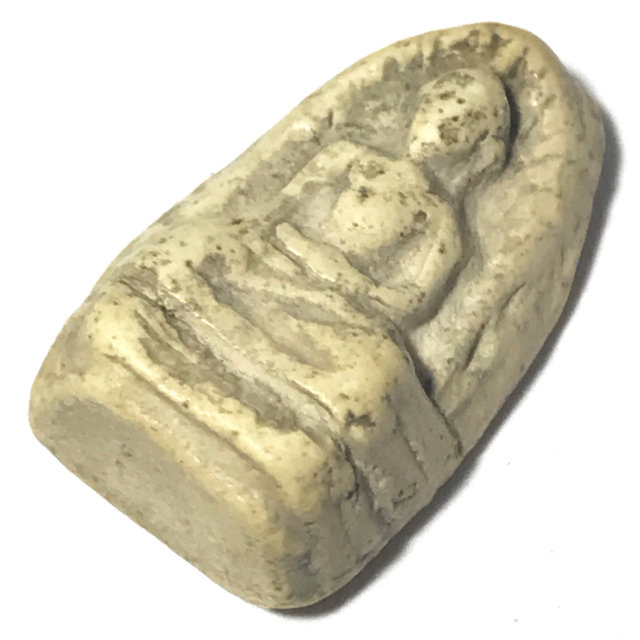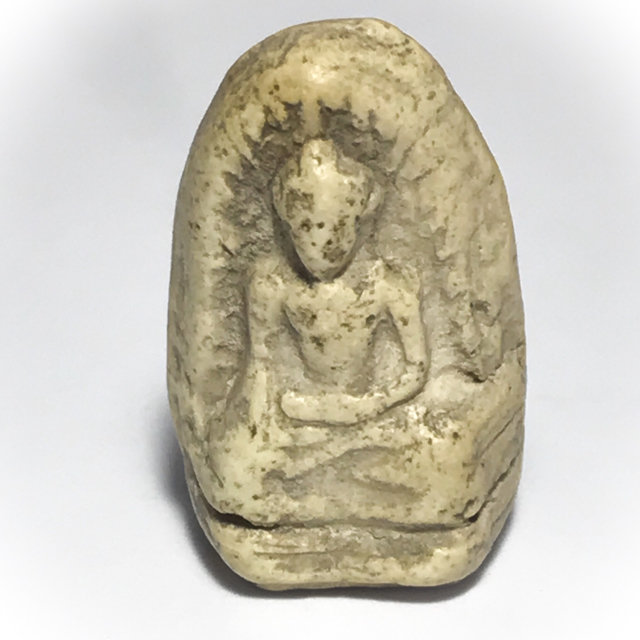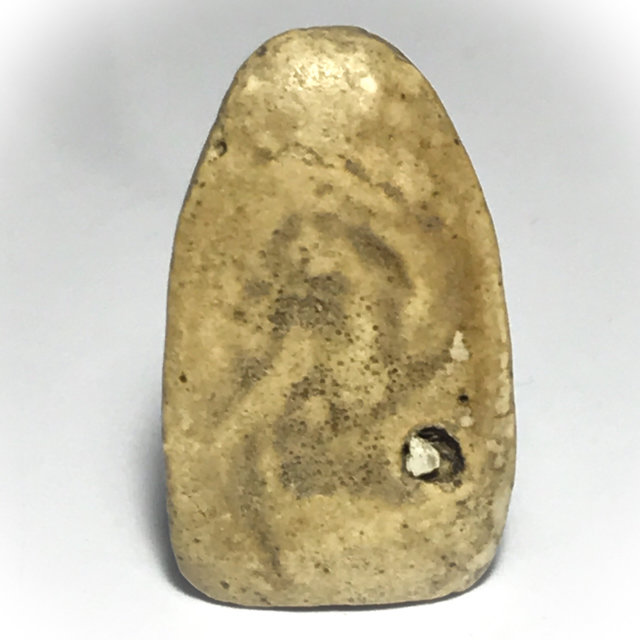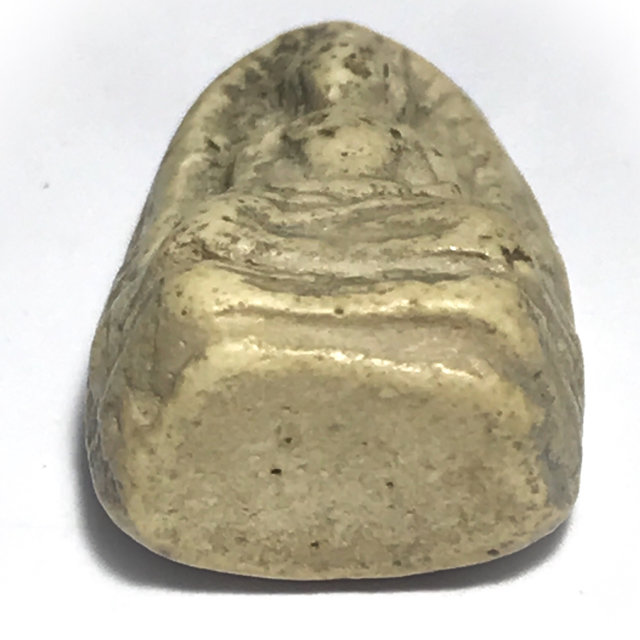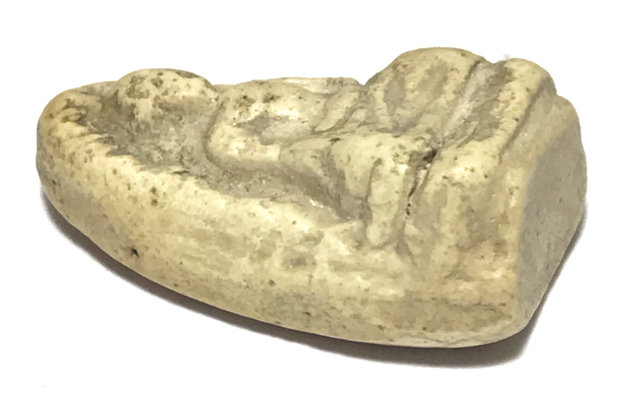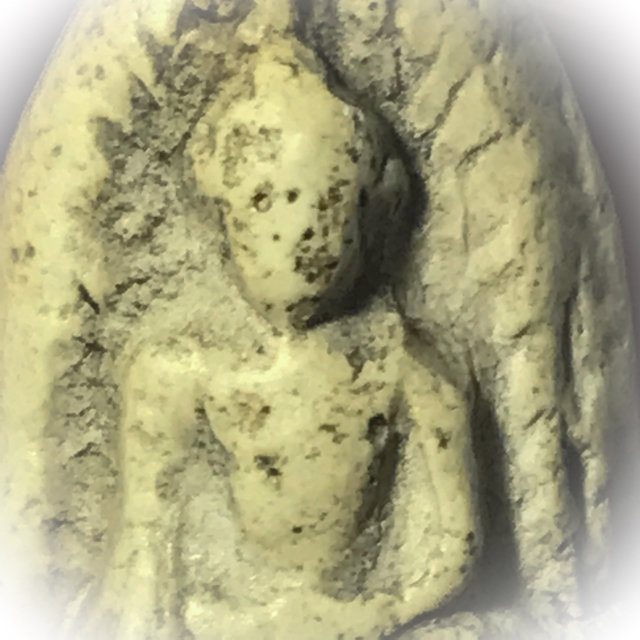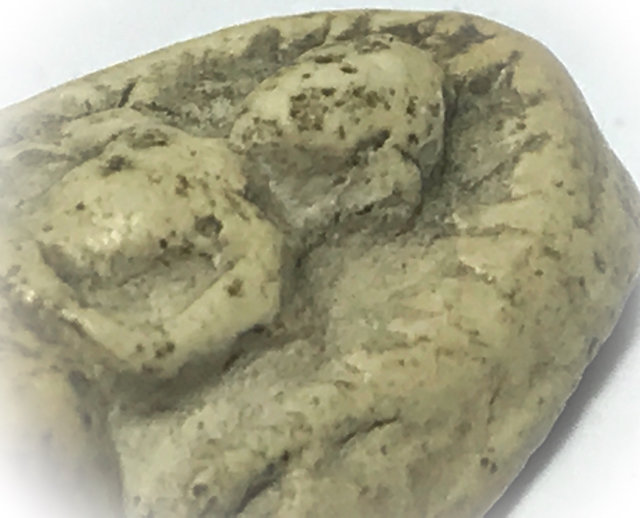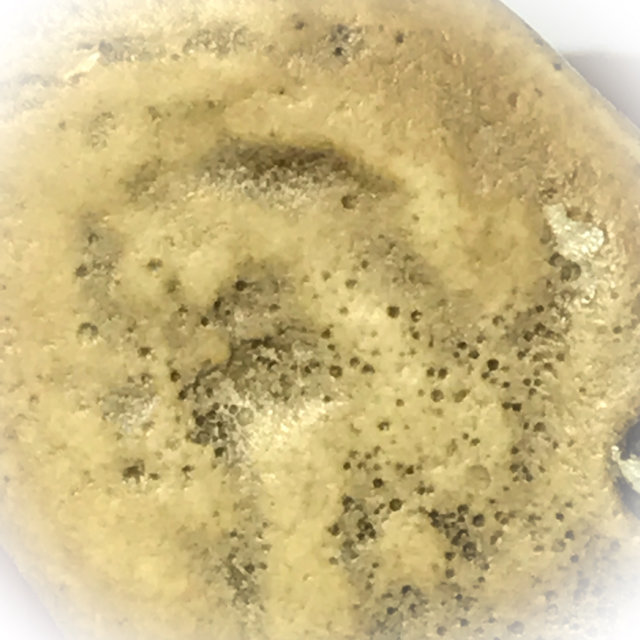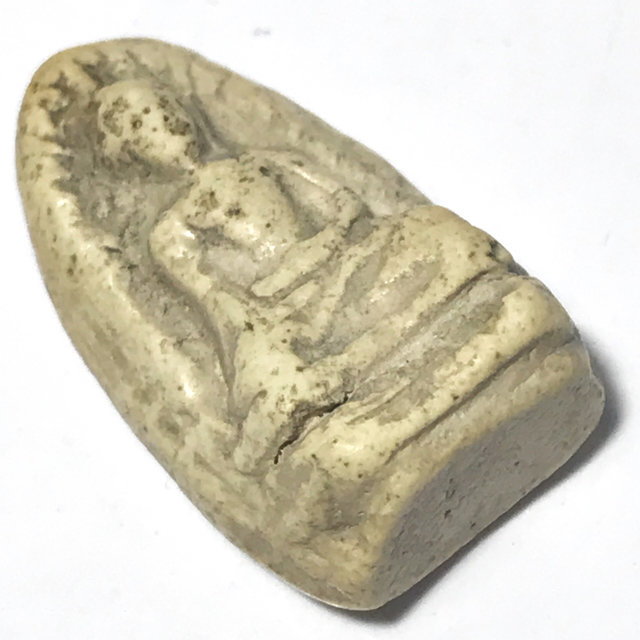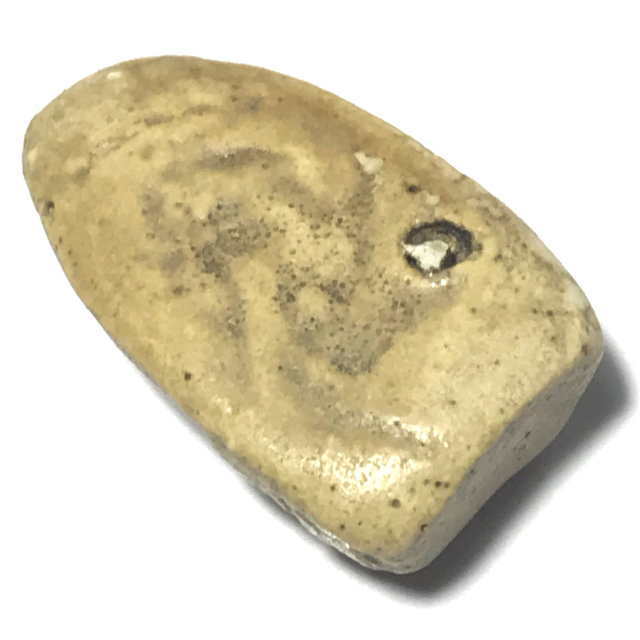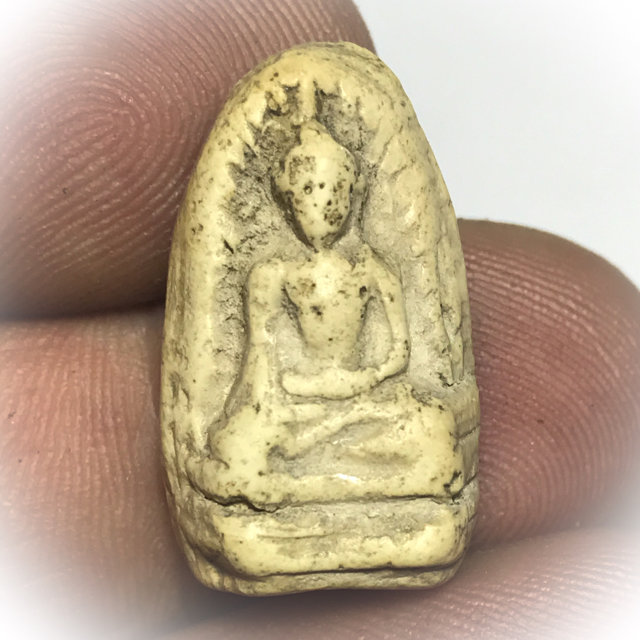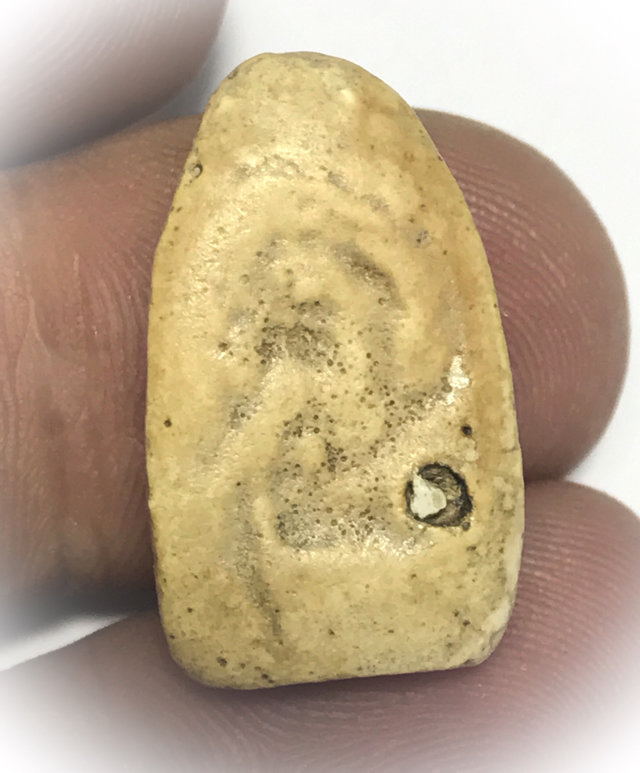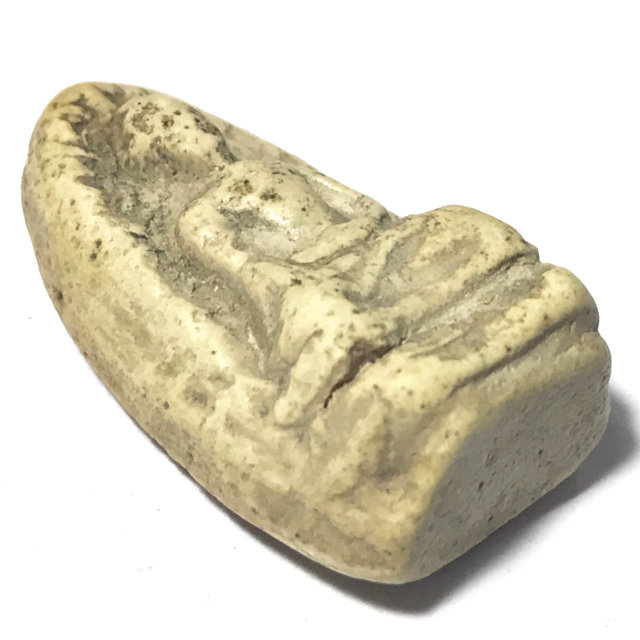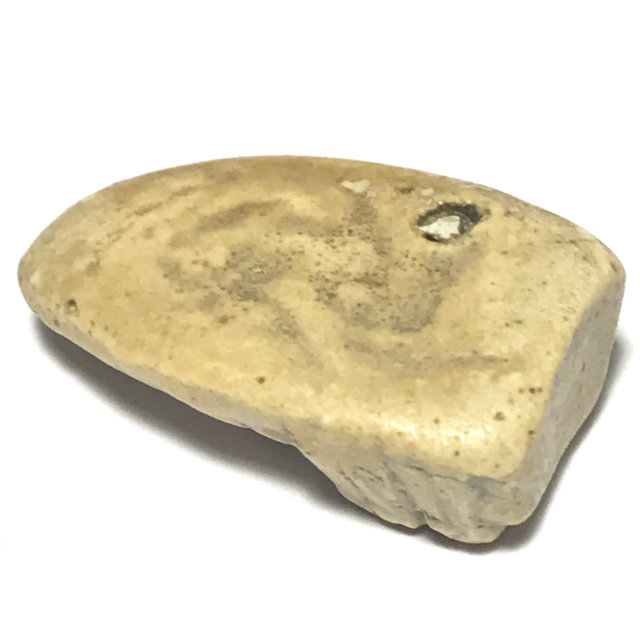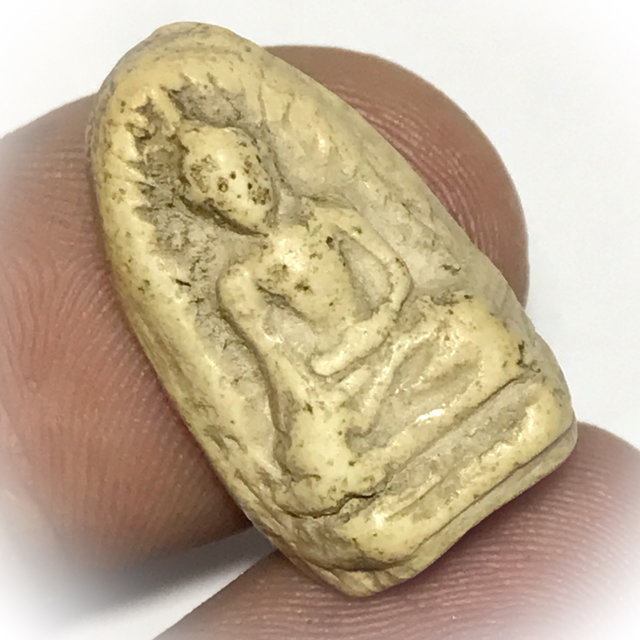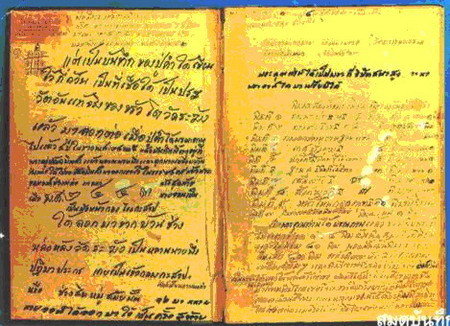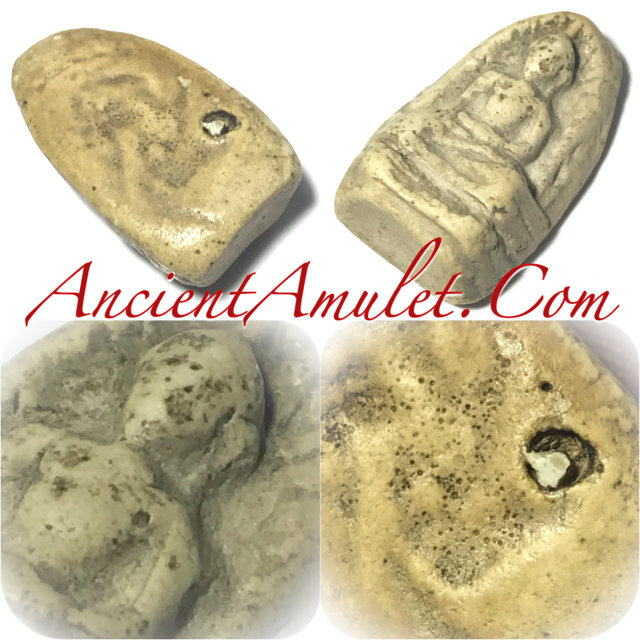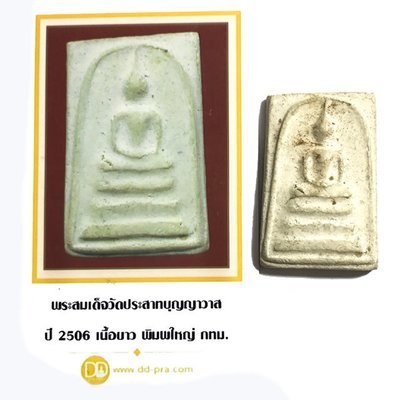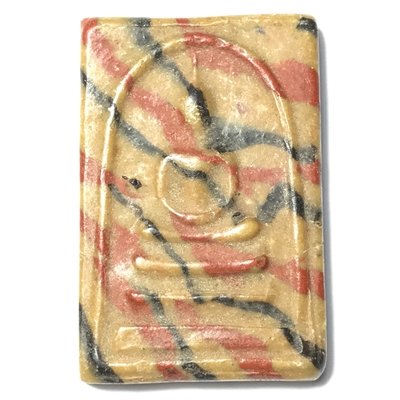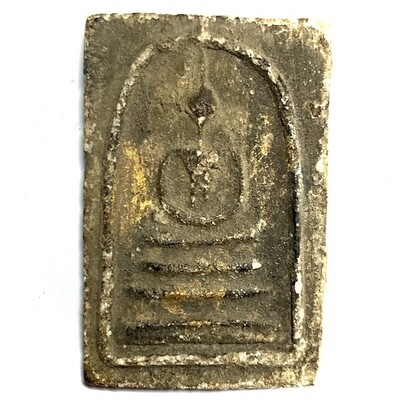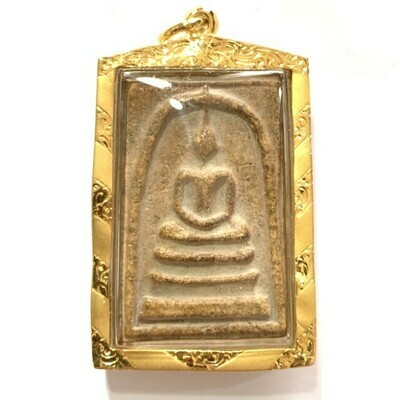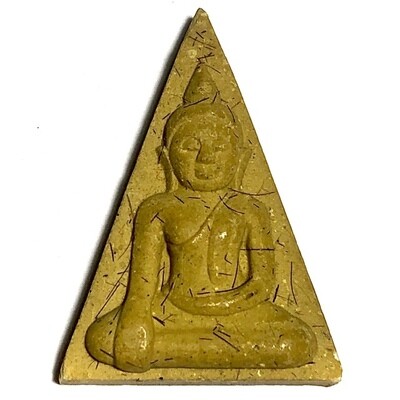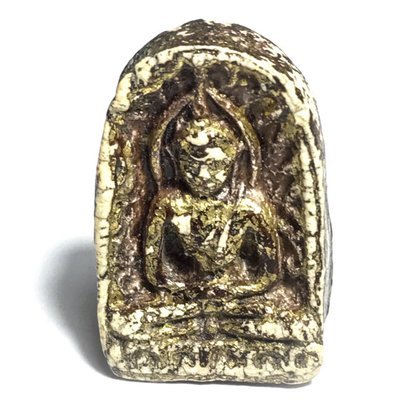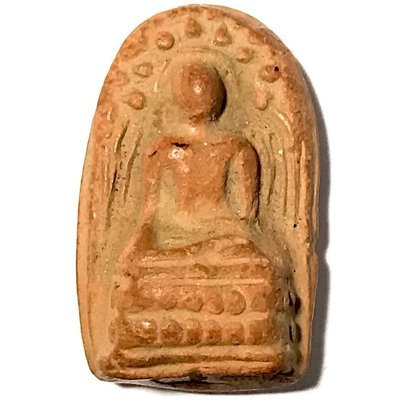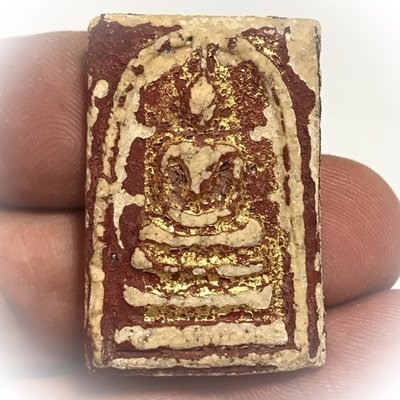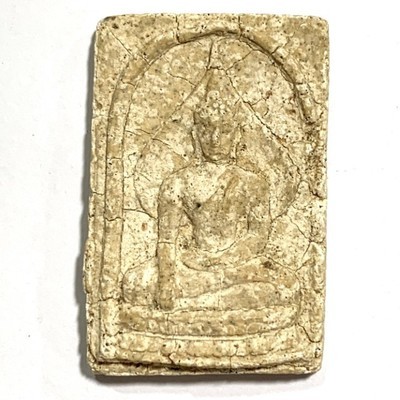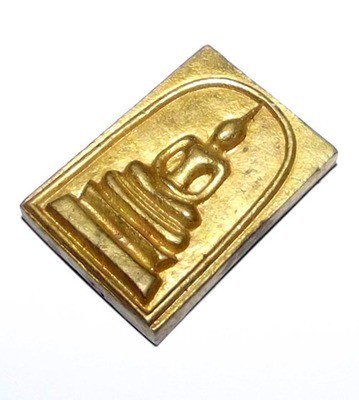A pristinely kept and extremely rare Rian Mangorn Koo Nuea Nava Loha Pim Pised Dtok Sorng Code Ma Wat Pha Nong Lom Run Sao Ha Maha Sethee 5th Lunar Saturday Blessing Ceremony Edition Guru Monk Coin, released in 2543 BE, to raise funds for the Kuti Songk Monks Huts and improve the facilities at the temple of Wat Pha Nong Lom.
This model of Rian Mangorn Koo twin dragons Monk Coin is a very rare Pim Pised (Niyom preferred) and differs from the majority of Rian Mangorn Koo Wat Pha Nong Lom Edition coins in Nava Loha, because of the double code MA stamp. Most coins of the Nava Loha series made for Wat Pha Nong Lom have only a single code Ma Stamp (on the Sangkati chest sash of the robe of Luang Phu), and only the Pim Pised special models received double code stamps. Only very few (unknown number) were distributed with double code stamp, making this not only a sacred, powerful master class amulet, but also a rare collectors piece.
The Rian Mangorn Koo of Luang Phu Hmun is, as are all of his amulets, known for the power of Jaroen Lap Wealth Increasement, and Lucky Fortunes, as well as for their Miraculous Protective Powers. Those born in the year of the dragon love to Bucha this amulet especially, for the obvious reason of the double dragon guardians.
For those with lower budgets, who seek power above collectability and rarity, we recommend to seek the Rian Mangorn Nuea Tong Daeng or Nava Loha single Code Ma, of the same edition, which carries a lower price than this special Nava Loha Pim Pised Gammagarn double code collectors edition model.
Pra Kru Wat Tap Khaw Pim Pra Rod Ancient Benjapakee Hiding Place Amulet - Somdej Pra Puttajarn (Dto)
Somdej Pra Rod Kru Wat Tap Khaw, 'Nuea Graeng' (stone hard), small Benjapakee Votive Tablet, with smooth subtle features, and the classic aspects of a true Pra Niyom Master Class amulet of the Pra Kru Hiding Place Amulet Category. The Pra Nang Paya was found to have various Pim in the hiding place, from different eras.
This exhibit has the visible presence of Muan Sarn Sacred Powders used by Somdej Pra Puttajarn (Dto) Prohmrangsri, and Ajarn Saeng (Wat Chonla Mani Khant), and are identical in characteristics to those found in the Pra Somdej Wat Rakang Kositaram of Somdej Dto, and are classified within the pantheon of amulets found in the Kru which are attributed to him and Ajarn Saeng (Mentor of Somdej Pra Puttajarn (Dto) Prohmrangsri in the Wicha Pra Somdej).
The Muan Sarn Sacred Clay of this Pristine and highly attractive exhibit is extremely time-hardened, and has a stone-like appearance, of an ancient amulet that is full of character. The amulet is considered an Ongk Kroo Reference Study Amulet, for the fact that it possesses all the expected features, and identical aspects, to the Sacred Clay found in the Pra Somdej Wat Rakang, of Somdej Pra Puttajarn (Dto) Prohmrangsri.
The amulets of the Kru Wat Tap Khaw themselves are older than even the Pra Somdej of Somdej Pra Puttajarn (Dto) Prohmrangsri, of Wat Rakang Kositaram (first two of three consecutive finds/batches), and are reference study amulets for students of the lineage of amulets of Somdej Pra Puttajarn (Dto) Prohmrangsri and Ajarn Saeng.
The Kru Tap Khaw amulets can in every sense be considered an 'Ongk Kroo' (teacher model), for reference study of the Pra Somdej Wat Rakang amulet, for the following reasons; 1. The amulet was almost certainly made by Somdej Dto Prohmrangsri, 2. This amulet is older than the Pra Somdej Wat Rakang, and hence is a good teacher as to how sacred clay that is more than 150 - 200 years old should look under the eye loupe. 3. The Muan Sarn Sacred Clay is almost identical in its appearance and ageing characteristics as the Pra Somdej Wat Rakang.
These amulets are compared to the Pra Somdej Wat Rakang of Somdej Dto Prohmrangsri , but are much more affordable in the current time. However, the Pra Kru Wat Tap Khaw series hiding place amulets are now becoming extremely rare, and have entered the Master-Class Pra Niyom Category. These amulets are yet another priceless possession of the devotee and collector of the Pra Dtragun Somdej Dto (Pantheon of amulets that are directly or indirectly associated with Somdej Dto in their making).
The Kru Wat Tap Khaw was discovered in 2480 by a Mr. Dteng (Surname not known), who found them whilst digging around the temple grounds. The Kru was found to have amulets buried which were made during three different Eras of History;
The first era was created in the Sukhothai Era, and were made from fine Nuea Pong Puttakun powders. A large number of different models were found, such as the Pra Pratan Porn, the Pra Ruang Nang, Pra Rueang Yern, Pra Lila. The amulets of this era have a creamy milky white clay hardened like stone, extremely similar in Muan Sarn to the Pra Somdej Wat Rakang Kositaram and to the amulets of Wat Plab.
The amulets of the second era found were from the early Ratanakosin period (somewhere around the time of King Rama 3), and are hence roughly of an age between 150 and 200 years old. This group of amulets were also made from Nuea Pong Puttakun, which have an almost identical appearance with the sacred clay of the Pra Somdej Wat Rakang Kositaram of Somdej Pra Puttajarn (Dto) Prohmrangsri.
A very large number of different kinds of amulet designs were found in this batch, some in greater numbers than others. Amongst the many Pim found in this batch were the Pra Luang Por Dto, Pra Khun Phaen Ha Liam, Pra Khun Phaen Khai Pa Seek, Pra Sam, Pra Narai Song Pern, and Pra Ruang, which were all obviously made in reverence to the previous periods of Thai Buddhist Arts of History.
When all aspects of these amulets are considered and the amulets themselves are examined in all their aspects, it is the common conclusion with experts that the Great Somdej Pra Puttajarn (Dto) Prohmrangsri of Wat Rakang Kositaram must have played a part in their making. Somdej Pra Puttajarn (Dto) Prohmrangsri is known to have hidden amulets in temples around the country, mostly in Central Thailand and in the North, and the amulets themself do not differ in 'Nuea Ha' (content), to the Pra Somdej Wat Rakang Kositaram. This makes the amulets of course a perfect reference study teacher model (Ongk Kroo) for training the eyes to recognise a true ancient Pra Somdej Wat Rakang Kositaram amulet.
These amulets have also been found in the Kru hiding place of the Kru Pra Yern Luang Por Dto of Wat Intrawiharn (Wat Bang Khun Prohm) of Somdej Pra Puttajarn (Dto) Prohmrangsri, which strengthens the evidence that Somdej Pra Puttajarn (Dto) Prohmrangsri was responsible for their making. Below is a video in HD of another Pim from this Kru (the Pim Pra Khun Phaen Ha Liam) with an unbiased narrative on the Kru Wat Tap Khaw amulets, given by Ajarn Spencer Littlewood
The amulets found in the Kru which came from the third era, were made and hidden during the time of King Rama 6, reaching up to the time of His Majesty Rama 9. This amulets of this batch were found in many forms and reminiscent or straight replicas of amulets of the great Masters of those times, such as the Pra Pim of Luang Por Ao, and Luang Phu Phueak, of Wat Ging Gaew.
One thing to notice about amulets of thie age, is that they were hand pressed, and that close study of the features of the design will reveal hand pressing, through the variations of depth and contour which arise from the hand using varied levels of pressure with each different press. Modern amulets (and fakes of ancient ones), tend to use machine pressing methods in mass, which results in every single amulet looking identical in its features. Precisely the opposite is true of hand pressed amulets.
The Muan Sarn Sacred Powder clay of the third later Era group of amulets, do not have the same agédness or appearance to its substance as the previous two batches mentioned, and have a much younger appearance in the features of the sacred clay. Some amulets even copied the Pim Song (models) found in the previous two eras of amulets found in the Kru, which caused suspicion about this third batch.
Because of the much younger age and appearance of this batch which was buried at a later era, and the replicas found in the batch, confusion arose, causing the whole Kru Wat Tap Khaw find to come under scrutiny and suspicion about their true age, and for quite a long time the amulets were overlooked, due to the fact that few people realised that the amulets of the two other eras were indeed much more ancient.
The educated collector and student hence must have selectiveness when examining the amulets of the Kru Wat Tap Khaw, because of the three different batches found, which have similar Pim Song in all of them. An experienced collector should hence use his experience to estimate the age of the clay of the amulet to define which of the three batches/eras the amulet came from (especially between second and third eras).
One does not however need to have immense expertise to tell the difference, because the second era amulets (the ones assumed to be made by Somdej Pra Puttajarn (Dto) Prohmrangsri), have a much older appearance, and a much harder stone-like clay. In the case of the Kru Wat Tap Khaw amulets, one should place higher value on recognising the age of the clay, than recognising the Pim Song (design model), because the model is found in more than one era batch. In short, the designs were replicated in all batches, but the age of each amulet cannot be replicated, and is the definitive measure.
The inner circle aficionados of this series of Hiding Place Amulets have various beliefs depending on which group of aficionados; The main group assume that it was the Great Khrua Ta Saeng, of Wat Mani Chonlakhant in Lopburi who made the first batch during the time or Rama the 3rd. Khrua Ta Saeng was the Kroo Ba Ajarn of the Great Somdej Pra Puttajarn (Dto) Prohmrangsri, who encountered him on Tudong forest wandering in the Ayuttaya region.
This was during the time that Somdej Pra Puttajarn (Dto) Prohmrangsri went missing from Wat Rakang Kositaram and spent 15 Years in the forests around the Northern regions of Thailand and could not be found, and it was during this time that Somdej Dto received the Wicha Pra Somdej and other methods of making Sacred Powders from Khrua Ta Saeng, and Kata Akom for subduing Maras, Ghosts and Demonic Spirits.
Khrua Ta Saeng liked to make amulets in the ancient Sukhothai and Ayuttaya periodic styles of artistic interpretation. He would make many kinds of ancient amulets and hide them in Kru in temples around both Sukhothai and Ayuttaya Regions. One very famous and recognisable amulet of Khrua Ta Saeng is the Hlang Hoo Hai, which has two holes in the back face of the amulet. The first era batch of the Kru Wat Tap Khaw amulet find has also examples of Pra Luang Por Dto Hlang Hoo Hai, which is very rare and highly preferred.
The rarest amulet of all of the first era batch of Wat Tap Khaw from Khrua Ta Saeng is the Pra Somdej Pim Gang Pla, theTri Gaay (Pra Sam), the Pra Khun Phaen Ha Liam, Pra Khun Phaen Khai Pa Seek, and the Pra Narai Song Pern.
There is written documentation form Luang Phu Kam of Wat Amarint, who was a Gaeji Ajarn who lived at the same time as, and who was a close friend of Somdej Dto, that amulets had been made by these masters. It is written that Luang Phu Kam had asked Somdej Pra Puttajarn Dto to make some sacred powder amulets in the style and fashion that was known and popular to the people of Ayuttaya, Sukhothai and Lopburi.
The very same models (Pim Song) of amulet which were found in the Kru Wat tap Khaw are mentjuoned in this documentation as having been made by Somdej Dto, and so there is little doubt remaining in the origins of the second era batch of the Kru Wat Tap Khaw.
Below; The written documentation from Luang Phu Kam regarding Somdej Pra Puttajarn (Dto) Prohmrangsri's involvement in the Kru Wat Tap Khaw amulets.
The Kru Wat Tap Khaw first and second era batch amulets are most certainly the best remaining chance to own an original amulet of Somdej Pra Puttajarn (Dto) Prohmrangsri, as well as being a perfect study reference pice, as Ongk Kroo teacher for the study of the Muan Sarn clay of the Immortal Pra Somdej Wat Rakang Kositaram of Somdej Pra Puttajarn (Dto) Prohmrangsri, Wat Rakang Kositaram.
